当前位置:网站首页>pytorch常见损失函数
pytorch常见损失函数
2022-07-06 11:03:00 【m0_61899108】
转载于:
PyTorch 中的损失函数总结 | 梦家博客 (dreamhomes.top)
1、L1 loss
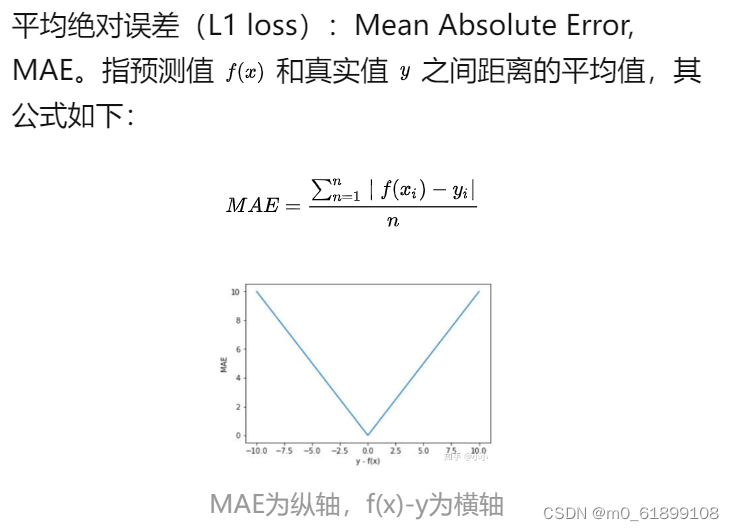
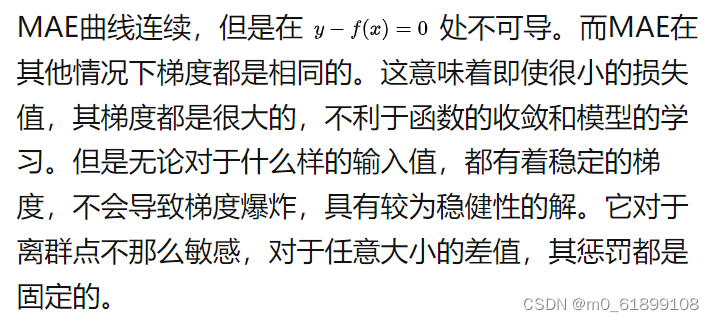
def mean_absolute_error(y_true, y_pred):
return K.mean(K.abs(y_pred - y_true), axis=-1)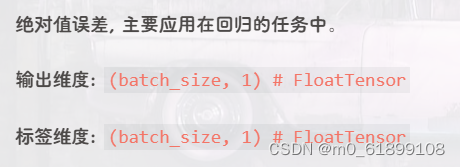
# 实例代码
import torch
from torch import nn
input_data = torch.FloatTensor([[3], [4], [5]]) # batch_size, output
target_data = torch.FloatTensor([[2], [5], [8]]) # batch_size, output
loss_func = nn.L1Loss()
loss = loss_func(input_data, target_data)
print(loss) # 1.6667
# 验证代码
print((abs(3-2) + abs(4-5) + abs(5-8)) / 3) # 1.6666
2、L2 loss
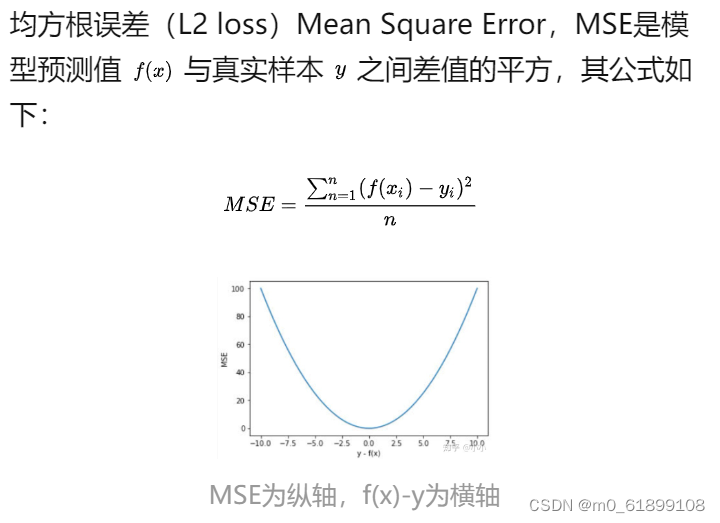

def mean_squared_error(y_true, y_pred):
return K.mean(K.square(y_pred - y_true), axis=-1)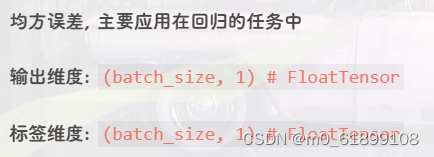
# 实例代码
import torch
from torch import nn
input_data = torch.FloatTensor([[3], [4], [5]]) # batch_size, output
target_data = torch.FloatTensor([[2], [5], [8]]) # batch_size, output
loss_func = nn.MSELoss()
loss = loss_func(input_data, target_data)
print(loss) # 3.6667
# 验证
print(((3-2)**2 + (4-5)**2 + (5-8)**2)/3) # 3.6666666666666665
3、smooth L1 loss
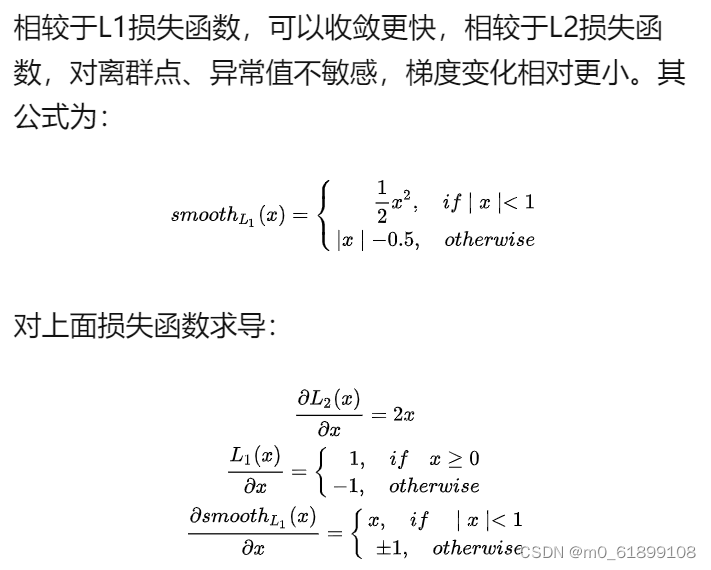
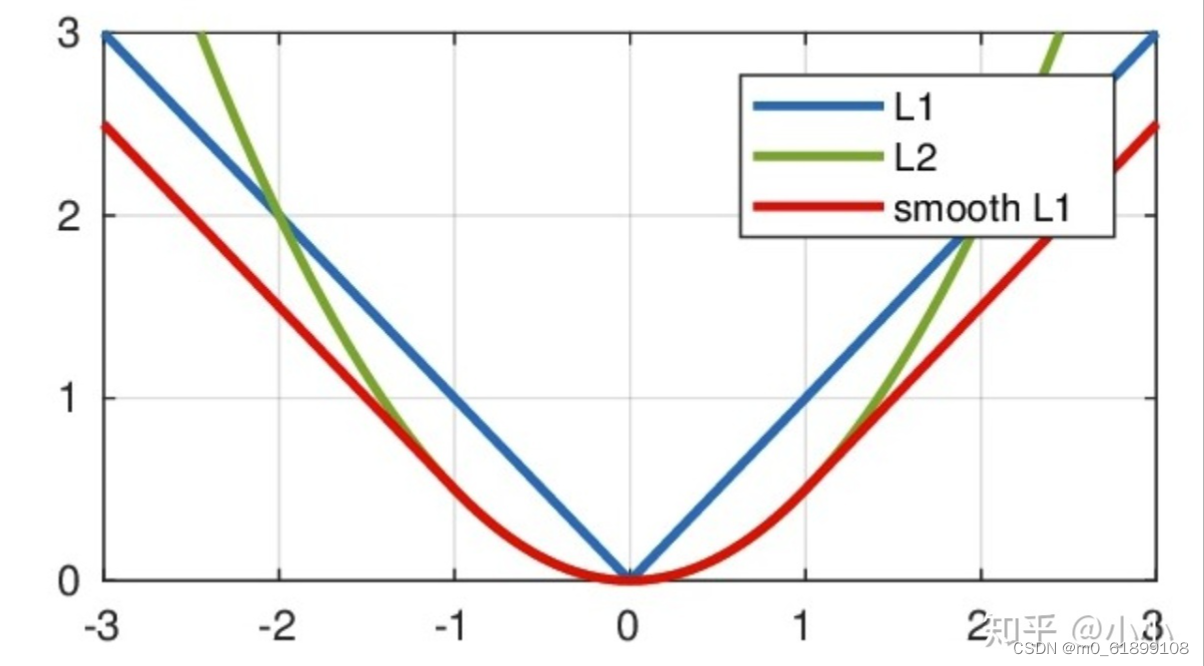
在Faster RCNN和SSD中使用了smooth L1 损失函数。

# 实例代码
import torch
from torch import nn
input_data = torch.FloatTensor([[3], [4], [5]]) # batch_size, output
target_data = torch.FloatTensor([[2], [4.1], [8]]) # batch_size, output
loss_func = nn.SmoothL1Loss()
loss = loss_func(input_data, target_data)
print(loss) # 输出:1.00174、NLLLoss

# 示例代码
# 三个样本 进行三分类 使用NLLLoss
import torch
from torch import nn
input = torch.randn(3, 3)
print(input)
# tensor([[ 0.0550, -0.5005, -0.4188],
# [ 0.7060, 1.1139, -0.0016],
# [ 0.3008, -0.9968, 0.5147]])
label = torch.LongTensor([0, 2, 1]) # 真实label
loss_func = nn.NLLLoss()
loss = loss_func(temp, label)
print(loss) # 损失1.6035
# 验证代码
output = torch.FloatTensor([
[ 0.0550, -0.5005, -0.4188],
[ 0.7060, 1.1139, -0.0016],
[ 0.3008, -0.9968, 0.5147]]
)
# 1. softmax + log = torch.log_softmax()
sm = nn.Softmax(dim=1)
temp = torch.log(sm(input))
print(temp)
# tensor([[-0.7868, -1.3423, -1.2607],
# [-1.0974, -0.6896, -1.8051],
# [-0.9210, -2.2185, -0.7070]])
# 2. 因为label为[0, 2, 1]
# 因此第一行取第一个值-0.7868。第二行取第三个值-1.8051,第三行取第二个值-2.2185。然后把负号直接扔掉。 说白的 就是去对数的负值成对应的label 也就是交叉熵。
print((0.7868 + 1.8051 + 2.2185) / 3) # 输出1.6034666666666666
5、CrossEntropyLoss

# 实例代码
# 三个样本进行三分类 和上面的数据一样
import torch
from torch import nn
loss_func1 = nn.CrossEntropyLoss()
output = torch.FloatTensor([
[ 0.0550, -0.5005, -0.4188],
[ 0.7060, 1.1139, -0.0016],
[ 0.3008, -0.9968, 0.5147]]
)
true_label = torch.LongTensor([0, 2, 1]) # 注意这里的label id必须从0开始 不能说label id是1,2,3 必须是0,1,2
loss = loss_func1(output, true_label)
print(loss) # 输出: 1.6035
6、BCELoss
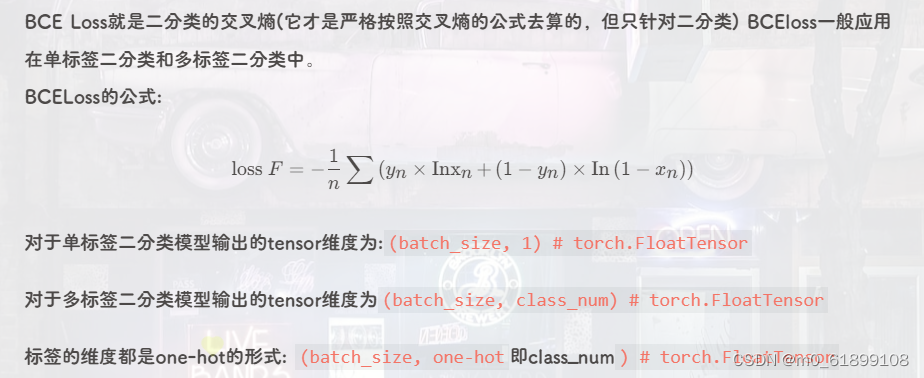
一个样本多标签分类
# 示例代码 一个样本多标签分类
import torch
from torch import nn
bce = nn.BCELoss()
output = torch.FloatTensor(
[
[ 0.0550, -0.5005, -0.4188],
[ 0.7060, 1.1139, -0.0016],
[ 0.3008, -0.9968, 0.5147]
]
)
# 注意 输出要经过sigmoid
s = nn.Sigmoid()
output = s(output)
# 假设是一条数据多个标签的分类
label = torch.FloatTensor(
[
[1, 0, 1],
[0, 0, 1],
[1, 1, 0]
]
)
loss = bce(output, label)
print(loss) # 输出: 0.9013
# 验证代码
# 1. 模型输出
output = torch.FloatTensor(
[
[ 0.0550, -0.5005, -0.4188],
[ 0.7060, 1.1139, -0.0016],
[ 0.3008, -0.9968, 0.5147]
]
)
# 2. 经过sigmoid
s = nn.Sigmoid()
output = s(output)
# print(output)
# tensor([[0.5137, 0.3774, 0.3968],
# [0.6695, 0.7529, 0.4996],
# [0.5746, 0.2696, 0.6259]])
label = torch.FloatTensor(
[
[1, 0, 1],
[0, 0, 1],
[1, 1, 0]
]
)
# 我们根据标签和sigmoid计算出计算
# 第一行
sum_1 = 0
sum_1 += 1 * torch.log(torch.tensor(0.5137)) + (1 - 1) * torch.log(torch.tensor(1 - 0.5137)) # 第一列
sum_1 += 0 * torch.log(torch.tensor(0.3774)) + (1 - 0) * torch.log(torch.tensor(1 - 0.3774)) # 第二列
sum_1 += 1 * torch.log(torch.tensor(0.3968)) + (1 - 1) * torch.log(torch.tensor(1 - 0.3968)) # 第三列
avg_1 = sum_1 / 3
# 第二行
sum_2 = 0
sum_2 += 0 * torch.log(torch.tensor(0.6695)) + (1 - 0) * torch.log(torch.tensor(1 - 0.6695)) # 第一列
sum_2 += 0 * torch.log(torch.tensor(0.7529)) + (1 - 0) * torch.log(torch.tensor(1 - 0.7529)) # 第二列
sum_2 += 1 * torch.log(torch.tensor(0.4996)) + (1 - 1) * torch.log(torch.tensor(1 - 0.4996)) # 第三列
avg_2 = sum_2 / 3
# 第三行
sum_3 = 0
sum_3 += 1 * torch.log(torch.tensor(0.5746)) + (1 - 1) * torch.log(torch.tensor(1 - 0.5746)) # 第一列
sum_3 += 1 * torch.log(torch.tensor(0.2696)) + (1 - 1) * torch.log(torch.tensor(1 - 0.2696)) # 第二列
sum_3 += 0 * torch.log(torch.tensor(0.6259)) + (1 - 0) * torch.log(torch.tensor(1 - 0.6259)) # 第三列
avg_3 = sum_3 / 3
result = -(avg_1 + avg_2 + avg_3) / 3
print(result) # 输出0.9013
二分类问题
# 示例代码
# 两个样本,二分类
import torch
from torch import nn
bce = nn.BCELoss()
output = torch.FloatTensor(
[
[ 0.0550, -0.5005],
[ 0.7060, 1.1139]
]
)
# 注意 输出要经过sigmoid
s = nn.Sigmoid()
output = s(output)
# 假设是一条数据多个标签的分类
label = torch.FloatTensor(
[
[1, 0],
[0, 1]
]
)
loss = bce(output, label)
print(loss) # 输出0.6327
# 验证代码
output = torch.FloatTensor(
[
[ 0.0550, -0.5005],
[ 0.7060, 1.1139]
]
)
# 注意 输出要经过sigmoid
s = nn.Sigmoid()
output = s(output)
# print(output)
# tensor([[0.5137, 0.3774],
# [0.6695, 0.7529]])
# true_label = [[1, 0], [0, 1]]
sum_1 = 0
sum_1 += 1 * torch.log(torch.tensor(0.5137)) + (1 - 1) * torch.log(torch.tensor(1 - 0.5137))
sum_1 += 0 * torch.log(torch.tensor(0.3774)) + (1 - 0) * torch.log(torch.tensor(1 - 0.3774))
avg_1 = sum_1 / 2
sum_2 = 0
sum_2 += 0 * torch.log(torch.tensor(0.6695)) + (1 - 0) * torch.log(torch.tensor(1 - 0.6695))
sum_2 += 1 * torch.log(torch.tensor(0.7529)) + (1 - 1) * torch.log(torch.tensor(1 - 0.7529))
avg_2 = sum_2 / 2
print(-(avg_1 + avg_2) / 2) # 输出0.63277、BCEWithLogitsLoss

# 实例代码
# 用上面那个两个样本进行二分类的数据
import torch
from torch import nn
bce_logit = nn.BCEWithLogitsLoss()
output = torch.FloatTensor(
[
[ 0.0550, -0.5005],
[ 0.7060, 1.1139]
]
) # 未经Sigmoid
label = torch.FloatTensor(
[
[1, 0],
[0, 1]
]
)
loss = bce_logit(output, label)
print(loss) # tensor(0.6327)8、Focal Loss
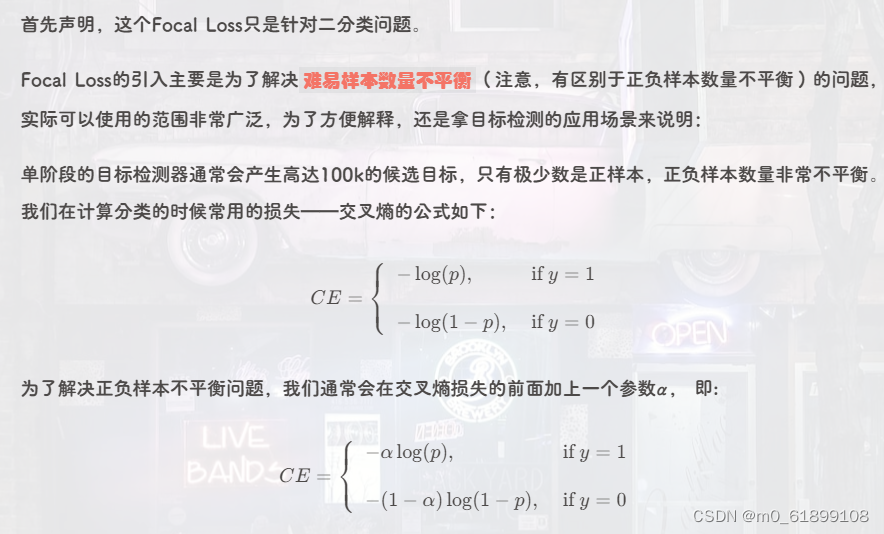
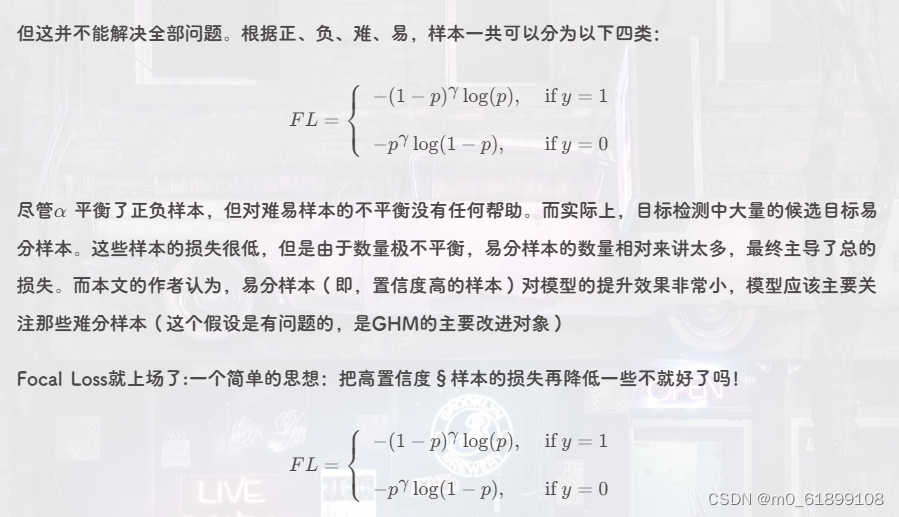
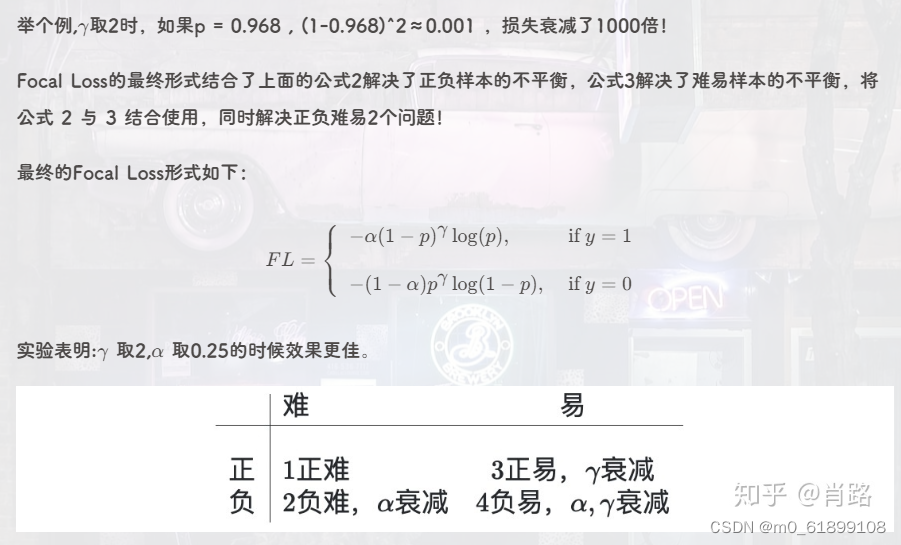
# 代码实现
import torch
import torch.nn.functional as F
def reduce_loss(loss, reduction):
reduction_enum = F._Reduction.get_enum(reduction)
# none: 0, elementwise_mean:1, sum: 2
if reduction_enum == 0:
return loss
elif reduction_enum == 1:
return loss.mean()
elif reduction_enum == 2:
return loss.sum()
def weight_reduce_loss(loss, weight=None, reduction='mean', avg_factor=None):
if weight is not None:
loss = loss * weight
if avg_factor is None:
loss = reduce_loss(loss, reduction)
else:
# if reduction is mean, then average the loss by avg_factor
if reduction == 'mean':
loss = loss.sum() / avg_factor
# if reduction is 'none', then do nothing, otherwise raise an error
elif reduction != 'none':
raise ValueError('avg_factor can not be used with reduction="sum"')
return loss
def py_sigmoid_focal_loss(pred, target, weight=None, gamma=2.0, alpha=0.25, reduction='mean', avg_factor=None):
# 注意 输入的pred不需要经过sigmoid
pred_sigmoid = pred.sigmoid()
target = target.type_as(pred)
pt = (1 - pred_sigmoid) * target + pred_sigmoid * (1 - target)
focal_weight = (alpha * target + (1 - alpha) *
(1 - target)) * pt.pow(gamma)
# 下面求交叉熵的这个函数 对pred进行了sigmoid
loss = F.binary_cross_entropy_with_logits(
pred, target, reduction='none') * focal_weight
# print(loss)
'''输出
tensor([[0.0394, 0.0506],
[0.3722, 0.0043]])
'''
loss = weight_reduce_loss(loss, weight, reduction, avg_factor)
return loss
if __name__ == '__main__':
output = torch.FloatTensor(
[
[0.0550, -0.5005],
[0.7060, 1.1139]
]
)
label = torch.FloatTensor(
[
[1, 0],
[0, 1]
]
)
loss = py_sigmoid_focal_loss(output, label)
print(loss)9、GHM Loss
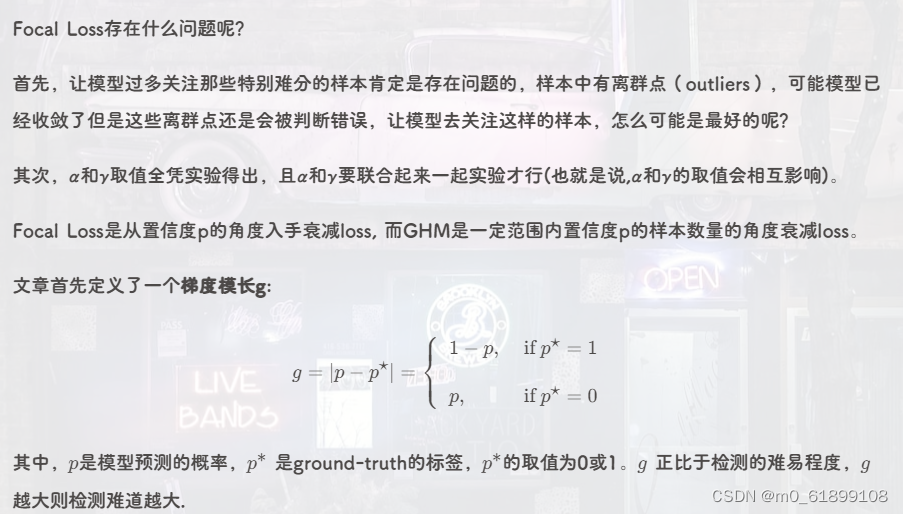

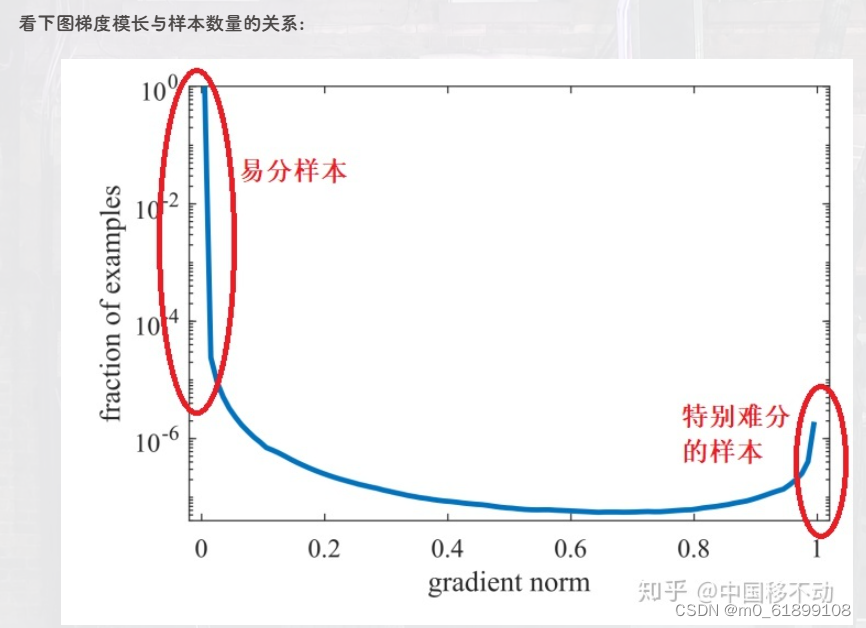
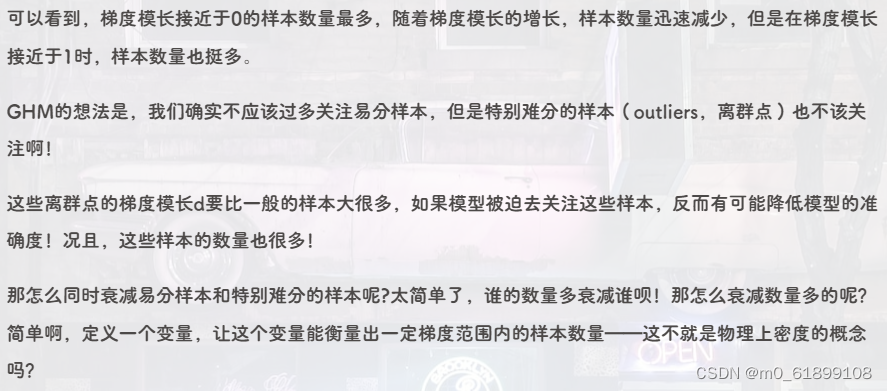
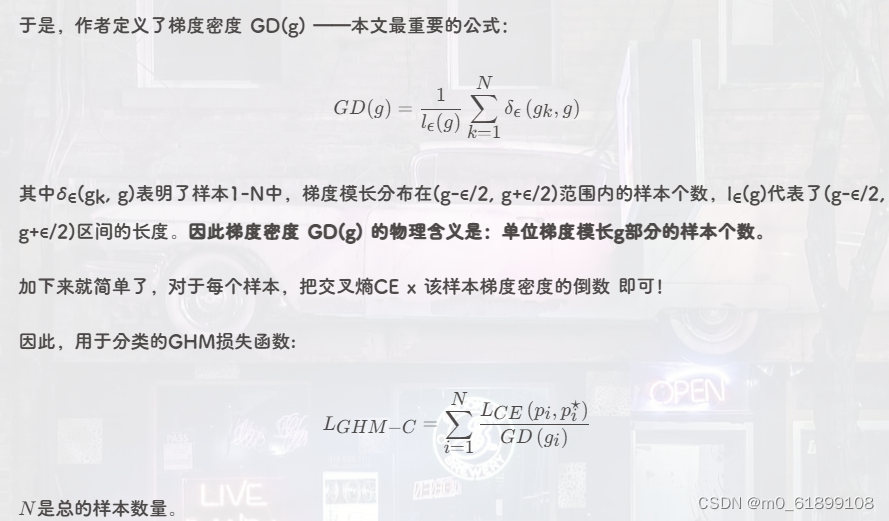
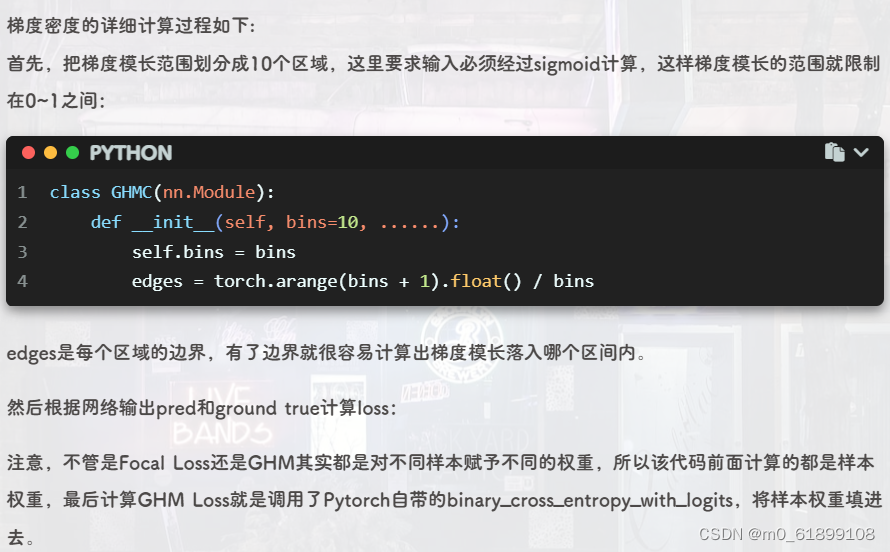
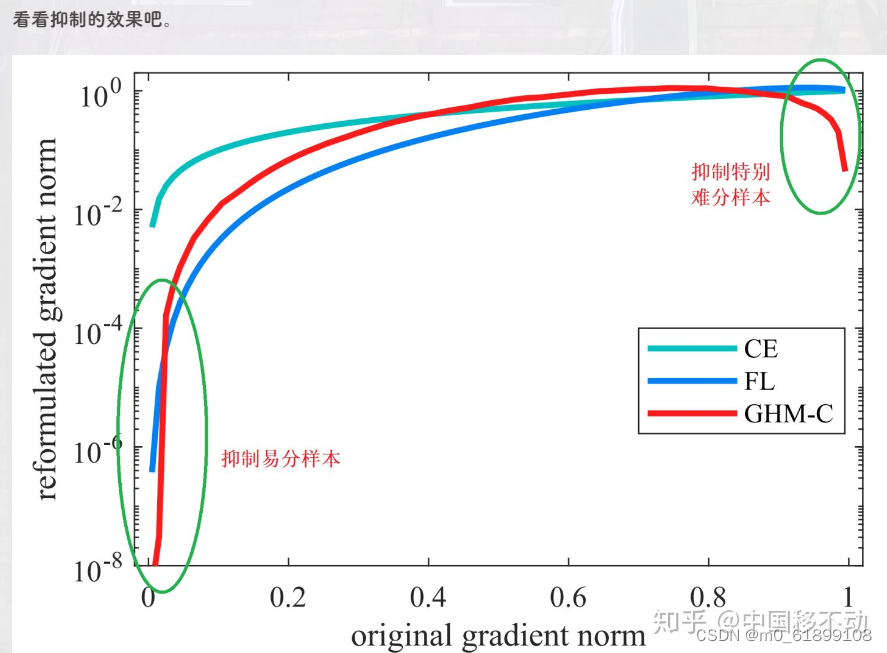

代码实现
# 代码实现
import torch
from torch import nn
import torch.nn.functional as F
class GHM_Loss(nn.Module):
def __init__(self, bins, alpha):
super(GHM_Loss, self).__init__()
self._bins = bins
self._alpha = alpha
self._last_bin_count = None
def _g2bin(self, g):
return torch.floor(g * (self._bins - 0.0001)).long()
def _custom_loss(self, x, target, weight):
raise NotImplementedError
def _custom_loss_grad(self, x, target):
raise NotImplementedError
def forward(self, x, target):
g = torch.abs(self._custom_loss_grad(x, target)).detach()
bin_idx = self._g2bin(g)
bin_count = torch.zeros((self._bins))
for i in range(self._bins):
bin_count[i] = (bin_idx == i).sum().item()
N = (x.size(0) * x.size(1))
if self._last_bin_count is None:
self._last_bin_count = bin_count
else:
bin_count = self._alpha * self._last_bin_count + (1 - self._alpha) * bin_count
self._last_bin_count = bin_count
nonempty_bins = (bin_count > 0).sum().item()
gd = bin_count * nonempty_bins
gd = torch.clamp(gd, min=0.0001)
beta = N / gd
return self._custom_loss(x, target, beta[bin_idx])
class GHMC_Loss(GHM_Loss):
# 分类损失
def __init__(self, bins, alpha):
super(GHMC_Loss, self).__init__(bins, alpha)
def _custom_loss(self, x, target, weight):
return F.binary_cross_entropy_with_logits(x, target, weight=weight)
def _custom_loss_grad(self, x, target):
return torch.sigmoid(x).detach() - target
class GHMR_Loss(GHM_Loss):
# 回归损失
def __init__(self, bins, alpha, mu):
super(GHMR_Loss, self).__init__(bins, alpha)
self._mu = mu
def _custom_loss(self, x, target, weight):
d = x - target
mu = self._mu
loss = torch.sqrt(d * d + mu * mu) - mu
N = x.size(0) * x.size(1)
return (loss * weight).sum() / N
def _custom_loss_grad(self, x, target):
d = x - target
mu = self._mu
return d / torch.sqrt(d * d + mu * mu)
if __name__ == '__main__':
# 这个损失函数不需要自己进行sigmoid
output = torch.FloatTensor(
[
[0.0550, -0.5005],
[0.7060, 1.1139]
]
)
label = torch.FloatTensor(
[
[1, 0],
[0, 1]
]
)
loss_func = GHMC_Loss(bins=10, alpha=0.75)
loss = loss_func(output, label)
print(loss)10、mean_absolute_percentage_error
mape:和mae的区别就是,累加预测值和实际值的差除以实际值,然后求均值。
def mean_absolute_percentage_error(y_true, y_pred):
diff = K.abs((y_true - y_pred) / K.clip(K.abs(y_true),
K.epsilon(),
None))
return 100. * K.mean(diff, axis=-1)11、mean_squared_logarithmic_error
msle:取对数,作差,平方,累加求平均值。
def mean_squared_logarithmic_error(y_true, y_pred):
first_log = K.log(K.clip(y_pred, K.epsilon(), None) + 1.)
second_log = K.log(K.clip(y_true, K.epsilon(), None) + 1.)
return K.mean(K.square(first_log - second_log), axis=-1)12、Huber Loss
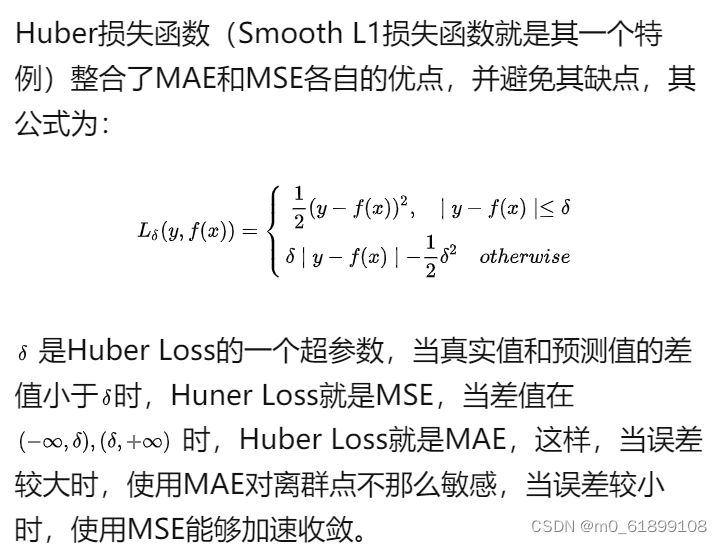
13、Log-Cosh Loss
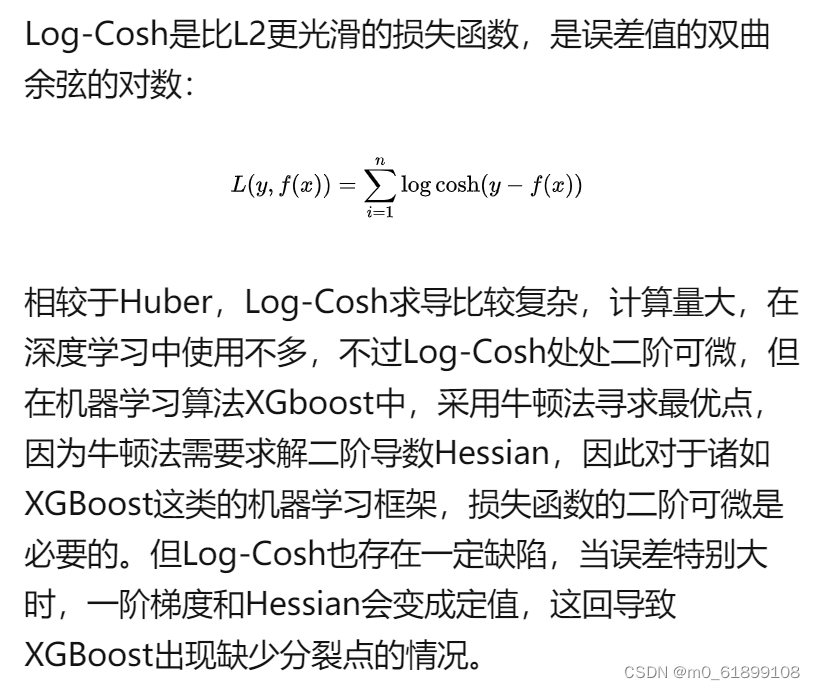
14、Quantile Loss分位数损失
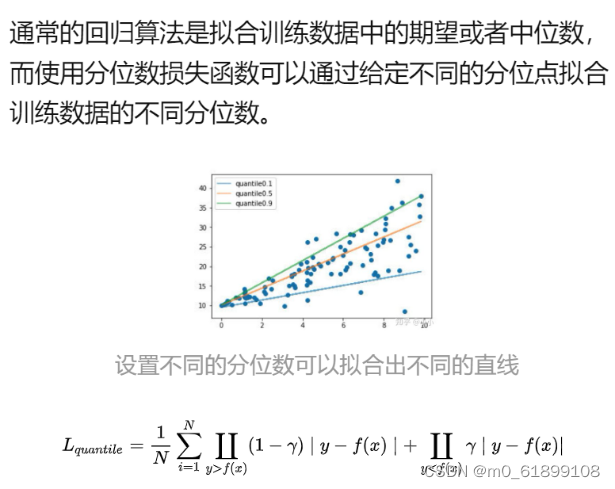
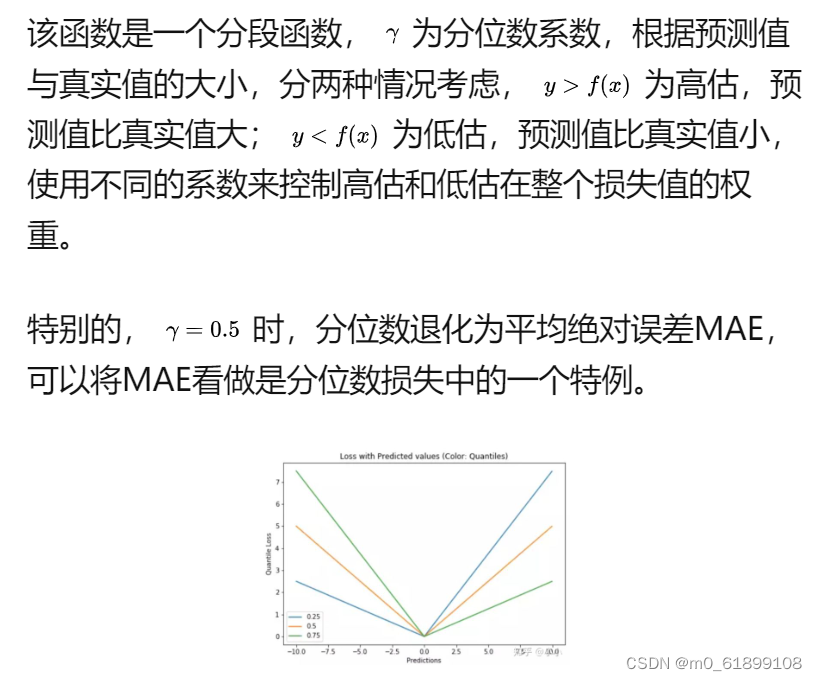
15、charbonnier
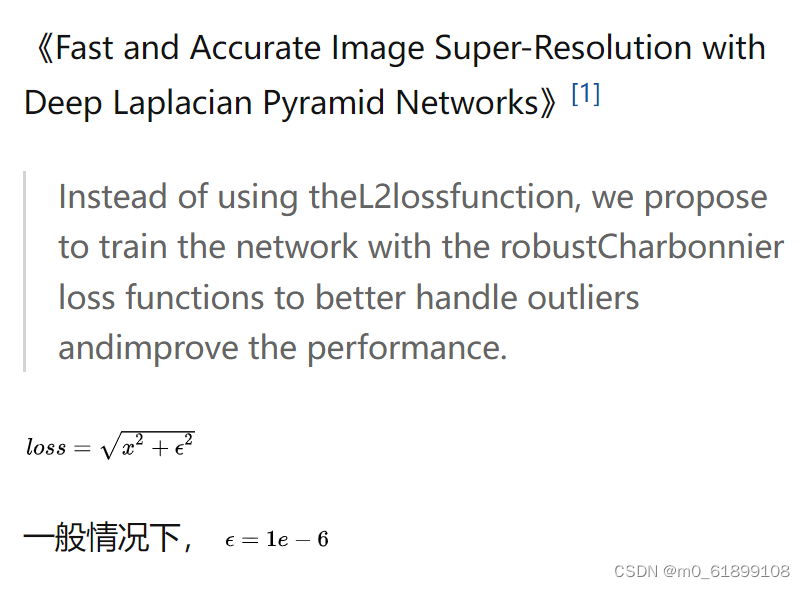

class L1_Charbonnier_loss(torch.nn.Module):
"""L1 Charbonnierloss."""
def __init__(self):
super(L1_Charbonnier_loss, self).__init__()
self.eps = 1e-6
def forward(self, X, Y):
diff = torch.add(X, -Y)
error = torch.sqrt(diff * diff + self.eps)
loss = torch.mean(error)
return loss16、wing loss

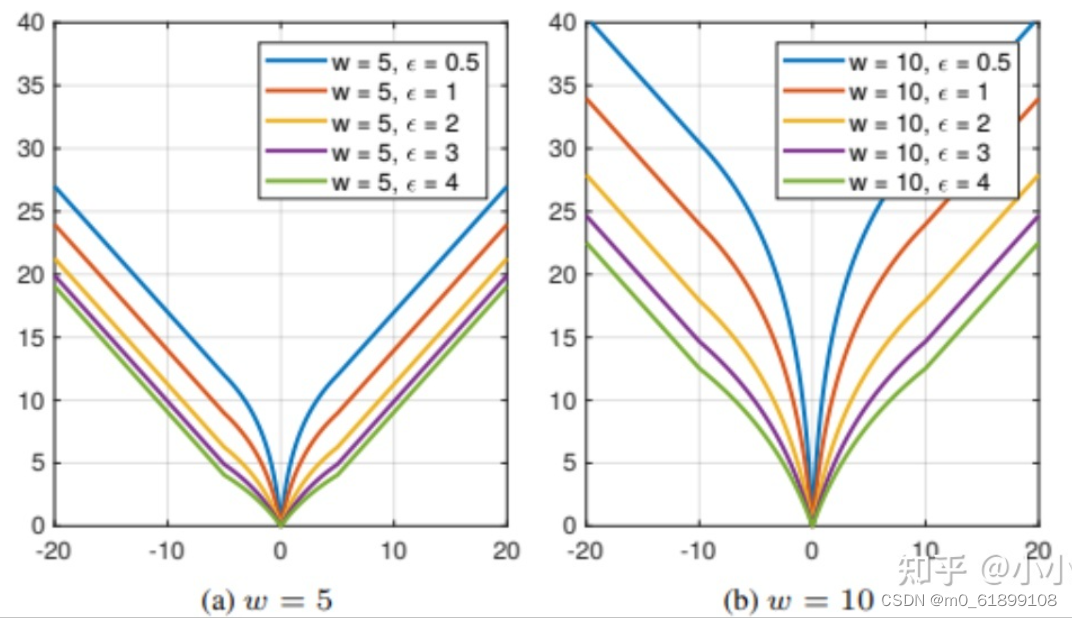
边栏推荐
- 287. Find duplicates
- 视频化全链路智能上云?一文详解什么是阿里云视频云「智能媒体生产」
- C#/VB. Net to add text / image watermarks to PDF documents
- [the 300th weekly match of leetcode]
- Mathematics in machine learning -- common probability distribution (XIII): Logistic Distribution
- RedisSystemException:WRONGTYPE Operation against a key holding the wrong kind of value
- 44 colleges and universities were selected! Publicity of distributed intelligent computing project list
- 监控界的最强王者,没有之一!
- Echart simple component packaging
- Solve DoS attack production cases
猜你喜欢

44所高校入选!分布式智能计算项目名单公示
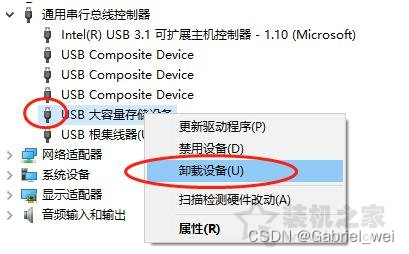
There is a sound prompt when inserting a USB flash disk under win10 system, but the drive letter is not displayed

关于静态类型、动态类型、id、instancetype
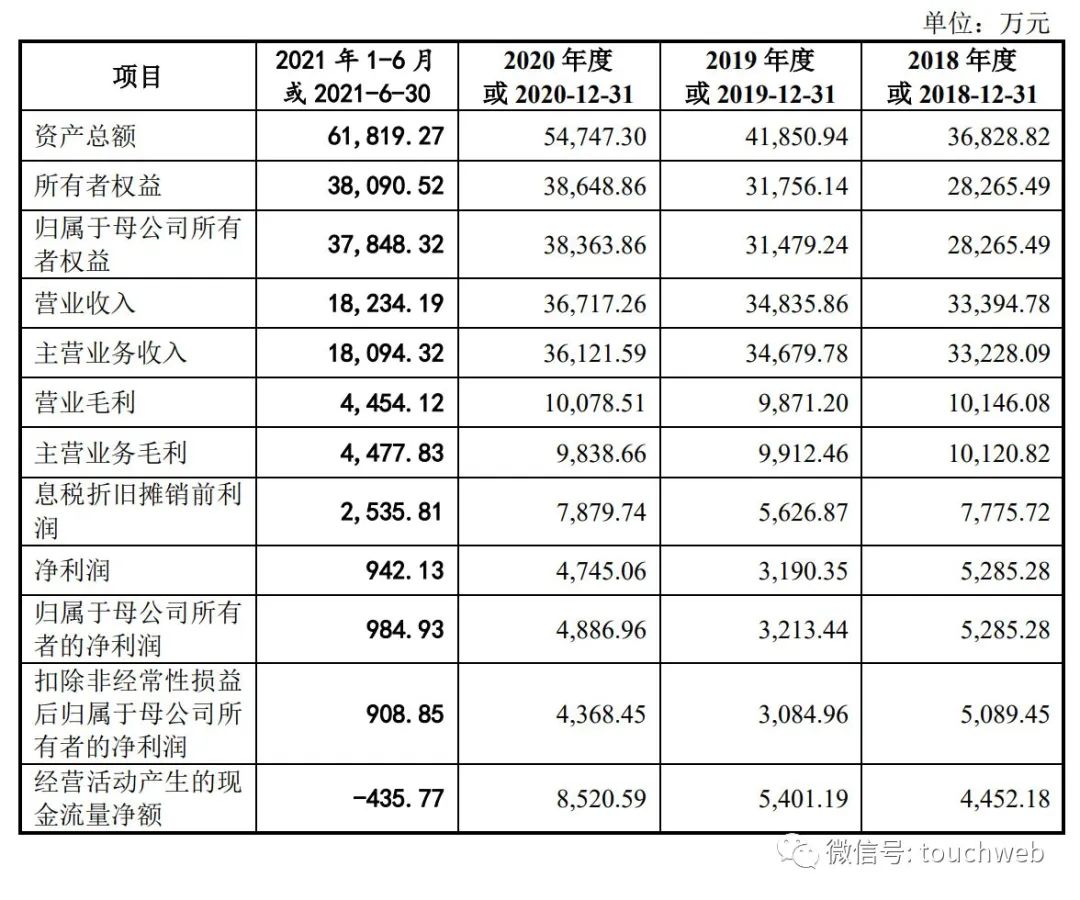
星诺奇科技IPO被终止:曾拟募资3.5亿元 年营收3.67亿

关于npm install 报错问题 error 1

深度循环网络长期血压预测【翻译】

根据PPG估算血压利用频谱谱-时间深度神经网络【翻】

【LeetCode第 300 场周赛】
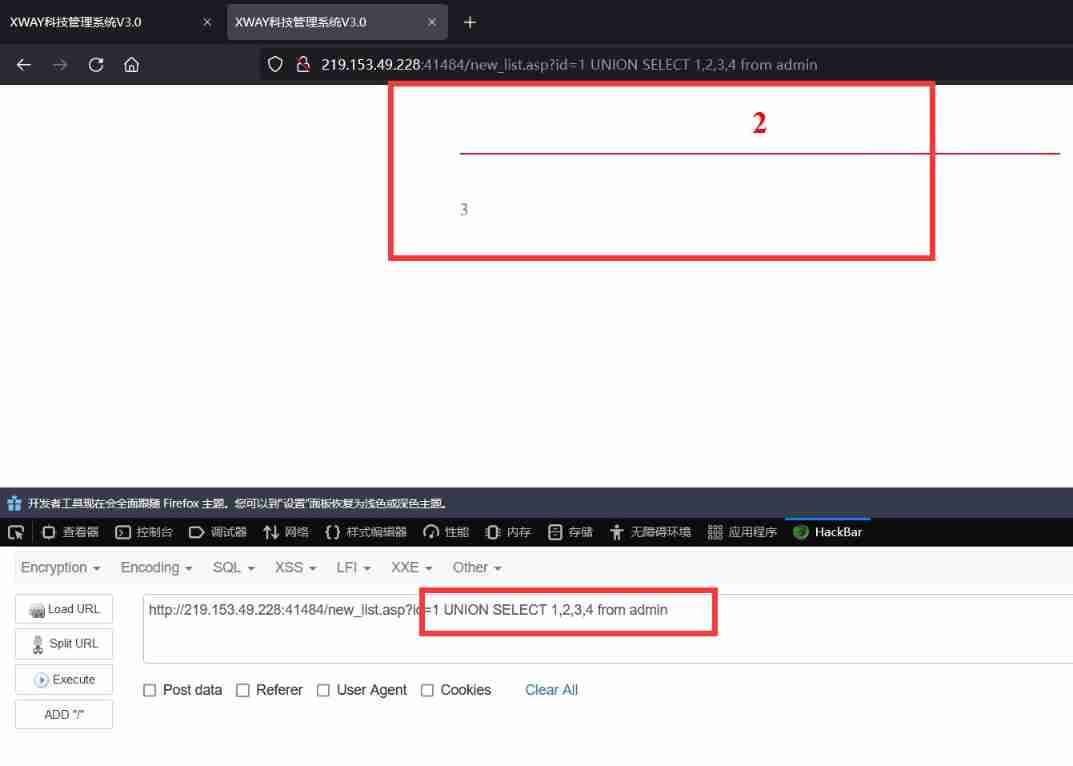
SQL injection - access injection, access offset injection

About NPM install error 1
随机推荐
复现Thinkphp 2.x 任意代码执行漏洞
Penetration test information collection - basic enterprise information
echart简单组件封装
Human bone point detection: top-down (part of the theory)
Breadth first traversal of graph
Specify flume introduction, installation and configuration
爬虫玩得好,牢饭吃到饱?这3条底线千万不能碰!
Cocos2d Lua smaller and smaller sample memory game
Blue Bridge Cup real question: one question with clear code, master three codes
Epoll () whether it involves wait queue analysis
Helm deploy etcd cluster
Video based full link Intelligent Cloud? This article explains in detail what Alibaba cloud video cloud "intelligent media production" is
用友OA漏洞学习——NCFindWeb 目录遍历漏洞
星诺奇科技IPO被终止:曾拟募资3.5亿元 年营收3.67亿
Unity资源顺序加载的一个方法
Reptiles have a good time. Are you full? These three bottom lines must not be touched!
Stm32+mfrc522 completes IC card number reading, password modification, data reading and writing
SQL injection Foundation
First, look at K, an ugly number
关于npm install 报错问题 error 1